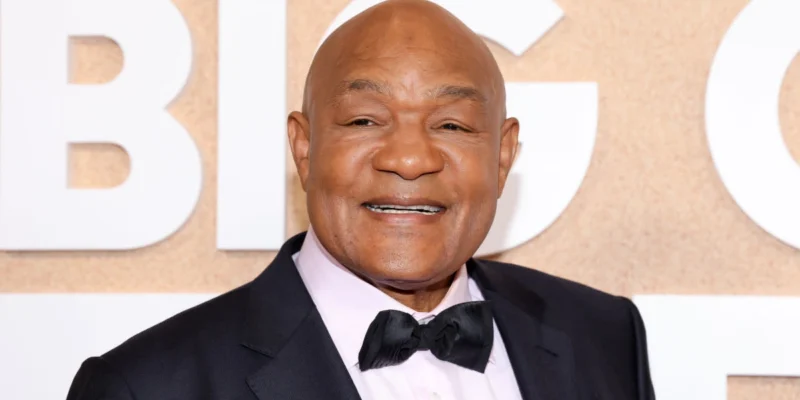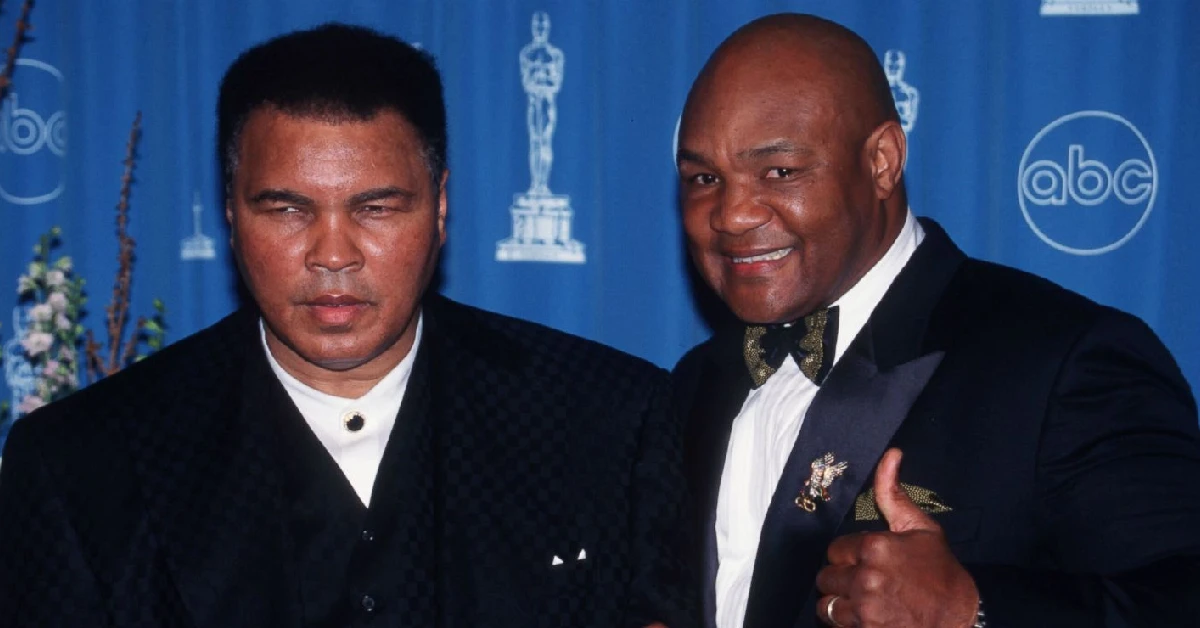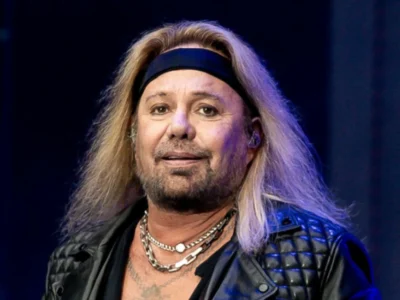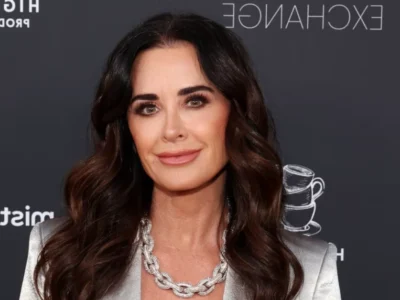
George Foreman’s name brings to mind powerful punches and sizzling grills. Many know him as a two-time heavyweight champion or the face behind the famous cooking appliance. But beneath these well-known achievements lies a fascinating story filled with surprising twists.
His journey from a troubled youth to global icon contains many hidden chapters. These lesser-known facts reveal the true depth of his character and the remarkable path he traveled. Let’s explore ten surprising facts about Big George that even devoted fans might have missed.
The Troubled Beginnings You Never Heard About
George Foreman wasn’t always the smiling businessman we know today. As a teenager, he was heading down a dangerous path in the Fifth Ward of Houston. He joined street gangs and dropped out of school before his 16th birthday, becoming known for mugging people in his neighborhood.
His childhood was marked by extreme poverty and uncertainty. He often went without food and necessities, experiences that shaped his later appreciation for success. These early struggles created a hunger for something better, pushing him toward the path that would change his life.
Job Corps became his lifeline at age 16, pulling him away from criminal activities. This government program provided structure and introduced him to boxing, transforming his aggression into athletic discipline. The program’s counselors spotted his natural physical abilities and encouraged him to channel his energy into sports.
His first boxing coach, Doc Broaddus, saw championship potential beneath the rough exterior. This mentorship relationship changed everything for young Foreman, giving him direction when he needed it most. Without this intervention, the world might never have known the boxing legend or the business success that followed.
Olympic Controversy
When Foreman won gold at the 1968 Mexico City Olympics, his patriotic flag-waving celebration sparked major controversy. This happened during a politically charged Games where other American athletes had staged Black Power protests. His display of patriotism came just days after teammates John Carlos and Tommie Smith raised black-gloved fists during their medal ceremony.
Many criticized Foreman for what they saw as a rejection of the civil rights movement. The backlash surprised him, as he intended his gesture as simple gratitude for the opportunities America had given him. This misunderstanding followed him for years, creating tension with some in the Black community.
Years later, Foreman explained he was simply proud to represent his country despite its flaws. His perspective came from his journey from poverty to Olympic glory, a path made possible by American programs like Job Corps. Time eventually healed these wounds, and many came to understand the complexity behind his actions.
The controversy taught him valuable lessons about public perception that would serve him well in his later business career. This experience helped shape his approach to his public image, showing him how actions can be interpreted in ways far from their intent.
Religious Transformation
Few sports comebacks compare to Foreman’s return to boxing in his 40s. What many don’t know is that this comeback stemmed directly from financial problems caused by his religious work. After losing to Jimmy Young in 1977, Foreman experienced what he describes as a religious epiphany in his dressing room.
He walked away from boxing at the height of his career to become a minister. Foreman built a church in Houston and established a youth center, pouring his boxing earnings into helping others. His mission work took priority over financial security, eventually depleting the fortune he had earned in the ring.
By the late 1980s, facing financial ruin, he made the difficult decision to return to boxing. At 38, an age when most fighters had long retired, Foreman stepped back into the ring. Many boxing experts ridiculed his comeback attempt, seeing it as nothing more than a sad publicity stunt.
His transformation extended beyond religion to his entire public persona. The once-intimidating fighter returned as a jovial, self-deprecating figure who connected with fans in new ways. This reinvention proved crucial to his second career as both boxer and businessman.
The Health Scare That Almost Ended It All
During his comeback, Foreman faced a life-threatening health crisis that few fans know about. After a 1990 fight, doctors discovered dangerous levels of exhaustion and dehydration that could have caused permanent damage. They warned him to reconsider his boxing career before it killed him.
Foreman secretly developed a complete overhaul of his training and nutrition. He worked with medical experts to create a sustainable approach to fighting at an advanced age. This science-based system allowed him to continue safely while maintaining his strength.
The experience led him to become passionate about health education, particularly for older adults. He began speaking about fitness for people over 40, challenging assumptions about aging and physical capability. His own body became living proof that age needn’t limit physical achievement.
This health journey directly connected to his later success promoting the lean-mean grilling machine. His commitment to healthier cooking aligned perfectly with the product, making him an authentic spokesman. What began as a life-threatening crisis ultimately contributed to his greatest commercial success.
The Record-Breaking Grill Deal Structure
The George Foreman Grill deal ranks among the most successful celebrity endorsements ever, but few know the brilliant structure behind it. Rather than taking a traditional flat endorsement fee, Foreman negotiated for ownership, receiving 45% of profits from every grill sold.
When sales exploded beyond all expectations, this arrangement made him far wealthier than boxing ever did. Salton Inc. eventually paid him $137.5 million in 1999 just for the rights to use his name in perpetuity. Combined with his previous earnings, the grill generated over $200 million for Foreman.
The deal became a case study in business schools across America. Marketing experts analyze how a celebrity’s authentic connection to a product can drive phenomenal sales success. The arrangement revolutionized how athletes approach endorsement opportunities.
Foreman’s business acumen surprised many who knew him only as a fighter. His understanding of his brand value showed remarkable foresight for someone with no formal business education. This deal single-handedly transformed athlete endorsements across all sports.
The Naming Strategy Behind His Five Sons
One of Foreman’s most unusual personal decisions was naming all five of his sons “George.” While often played for laughs, this choice had thoughtful reasoning behind it. Foreman wanted to create an unbreakable bond among his boys, giving them a shared identity that would keep them connected.
His own childhood had lacked strong family ties, something he was determined to change for his children. The name sharing created a family brand of sorts, much like he would later create with his business ventures. Each son has a different middle name that serves as their primary identifier.
The Georges have grown up close, supporting each other through various ventures and challenges. Several have followed their father into boxing, while others have pursued different career paths with his support. Their shared name has indeed created the family unity Foreman hoped for.
This naming choice reflects Foreman’s unconventional thinking that served him well in both boxing and business. He wasn’t afraid to break norms when he believed in something, whether naming children or returning to boxing in his 40s. This willingness to follow his own path defines much of his success.
The Lost Fortune Most Fans Never Knew About
Between his first and second boxing careers, Foreman lost nearly all of his multi-million-dollar fortune. Poor investments, generous giving, and maintaining his church and youth center drained his accounts almost completely. This financial collapse forced his return to boxing at an age when most fighters had been retired for a decade.
His financial advisors had warned him about unsustainable spending patterns for years. Foreman’s generous nature led him to support dozens of family members and friends, creating massive monthly obligations. His heart for giving outpaced even his substantial boxing earnings.
The experience taught him valuable lessons about wealth management that he later applied to his grill earnings. He established trusts and investment structures to protect his second fortune, ensuring financial security for generations. This hard-learned wisdom helped him maintain the wealth from his business ventures.
Foreman now speaks openly about his financial mistakes to help others avoid similar pitfalls. He particularly focuses on helping young athletes understand how to protect their earnings for long-term security. His story serves as both a warning and an inspiration for those who suddenly find themselves wealthy.
The Untold Muhammad Ali Connection

The relationship between Foreman and Muhammad Ali evolved in surprising ways that few people realize. After their legendary “Rumble in the Jungle” fight, the two eventually developed a deep friendship that lasted until Ali’s death. Foreman often visited Ali during his later years, offering support as Parkinson’s disease progressed.
Foreman has spoken about how losing to Ali ultimately saved his life and career. The defeat forced him to rebuild himself both physically and mentally, leading to his greatest successes. Without that loss, he might never have experienced his religious conversion or developed the personality that made him a marketing phenomenon.
Ali and Foreman traveled together to promote various causes in their later years. They raised money for Parkinson’s research and supported youth boxing programs in underserved communities. Their shared experiences created a bond that transcended their famous rivalry.
In interviews, Foreman has called Ali “the greatest human being I’ve ever known.” This generous assessment comes from the man who lost his championship and undefeated record to Ali, showing the depth of respect that developed. Their relationship demonstrates how competition can evolve into profound mutual admiration.
Methods of His Comeback
Foreman’s training methods during his comeback years included unusual techniques kept largely secret from the public. While other fighters focused on cutting-edge equipment, Foreman chopped wood, pushed cars, and performed farm-style labor. These old-school methods built functional strength that served him well against younger opponents.
His diet contradicted conventional wisdom for professional athletes. Foreman embraced protein-heavy meals when most trainers recommended carb-loading, pioneering approaches now common in sports nutrition. His body responded better to these methods at his advanced age.
Sleep became a critical focus of his training regimen, with strict 9-hour requirements nightly. This emphasis on recovery came decades before sleep science became mainstream in athletics. Foreman understood intuitively what sports science would later confirm about the importance of rest.
These unconventional methods worked because they were tailored specifically to his aging body. Rather than trying to train like a 20-year-old, he developed systems that worked for his 40-something physique. This personalized approach to training contributed significantly to his historic second championship.
Beyond Boxing and Grills
Foreman’s philanthropy remains largely unknown compared to his public achievements. His youth center in Houston has served thousands of at-risk children, providing alternatives to gang life. Many successful graduates cite the center as their saving grace during difficult childhoods.
He maintains a scholarship fund that has sent hundreds of students to college. These educational opportunities target children from backgrounds similar to his own, challenging upbringing. The program emphasizes both academic achievement and character development.
Environmental causes have become another focus in recent years. Foreman has supported sustainable farming initiatives and clean water projects in multiple countries. His interest in these issues grew from his own childhood experiences with resource scarcity.
Mental health advocacy rounds out his charitable work, with particular attention to depression in men. Drawing from his own experiences with dark periods, Foreman speaks openly about seeking help during difficult times. His willingness to discuss these issues has helped reduce stigma, particularly in the boxing community.
George Foreman’s story contains far more depth than most casual fans realize. From troubled teen to global icon, his journey offers lessons in resilience, reinvention, and remaining true to personal values. These ten lesser-known aspects of his life reveal the complex man behind the famous name and smile.









